Below we answer some of the most common questions we get about the study into the incredible migration of the bar-tailed godwits.
The Project
What is the aim of the project?
How are the tags attached to the birds?
What do the names 4RBWW or the like mean?
Migration
Do they stop to feed during a migration flight?
Do they fly in flocks or solo?
What is the longest non-stop flight recorded?
What is the fastest flight from Alaska to NZ?
Do the young birds migrate to NZ in their first year?
Do the young birds come with their parents on their first flight?
Do they sleep while they are migrating?
Life Cycle
Why are some birds in the flock a reddish colour?
Are they site faithful in Alaska and NZ?
Thank you for your interest and following us. If you enjoy learning about these amazing manu with us, you can support our mahi and this research so that we can continue to understand, educate and advocate for the protection of them and their habitat. Keep the birds coming! Kia haere mai nga manu!
What is the aim of the project?
In late 2019, two satellite tracking projects were embarked upon. The first aimed to fit transmitters to adults bar-tailed godwits and discover how they are responding to the challenging conditions in the Yellow Sea. Are their patterns of movements different now to a decade ago? Do they refuel entirely at one site or are they having to move around in search of adequate food?
The second was to fit transmitters to juveniles, and track individuals for the next 2–3 years as they range around New Zealand (and possibly eastern Australia). How many birds make these exploratory movements? When do they settle, and does that affect when they start to migrate?
Thank you to the partners, supporters, organisations and volunteers that make this research possible, including the Global Flyway Network, Massey University, Max Planck Institute, Fudan University, Birds Canada, Birds New Zealand and the East Asian-Australasian Flyway Partnership.
You can read the full article about the project in Issue 115 of Pukorokoro Miranda News.
How big are the tags?
The tags used in these projects weigh just 2 or 5 grams each.
How are the tags attached to the birds?
The tags are held on by a silicone harness to the lower back. This harness is slightly stretchy, taking into account their massive changes in body weight for these long-haul flights.
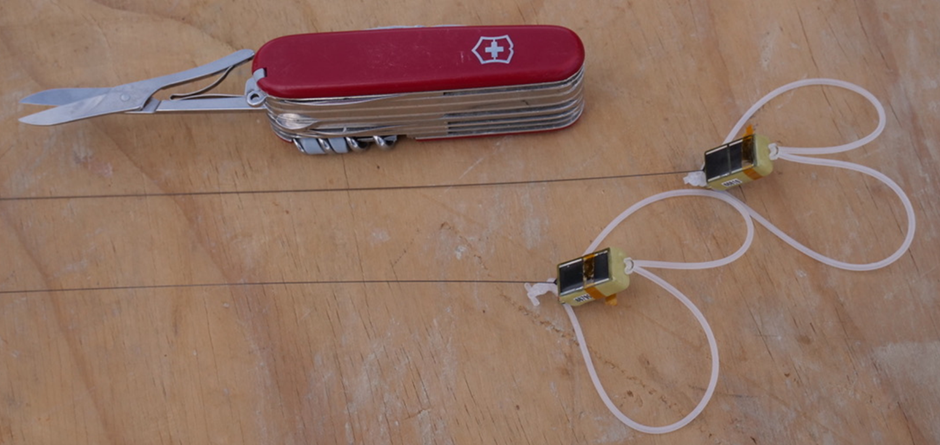
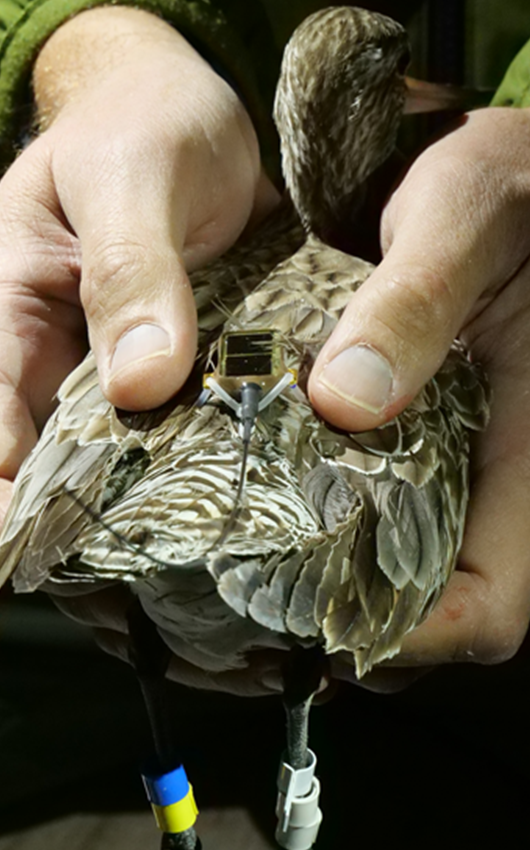
How do the tags work?
The tags transmit a signal powerful enough to be received by earth orbiting satellites. This satellite network (Argos) has the ability to geographically locate the tag from any location on Earth using the Doppler effect. The data transmitted to the satellites can include pieces of the geographic coordinates or other sensor data from the tag. That data is then collected from the satellites by ground or polar based receiving stations when they’re in view.
What do the names 4RBWW or the like mean?
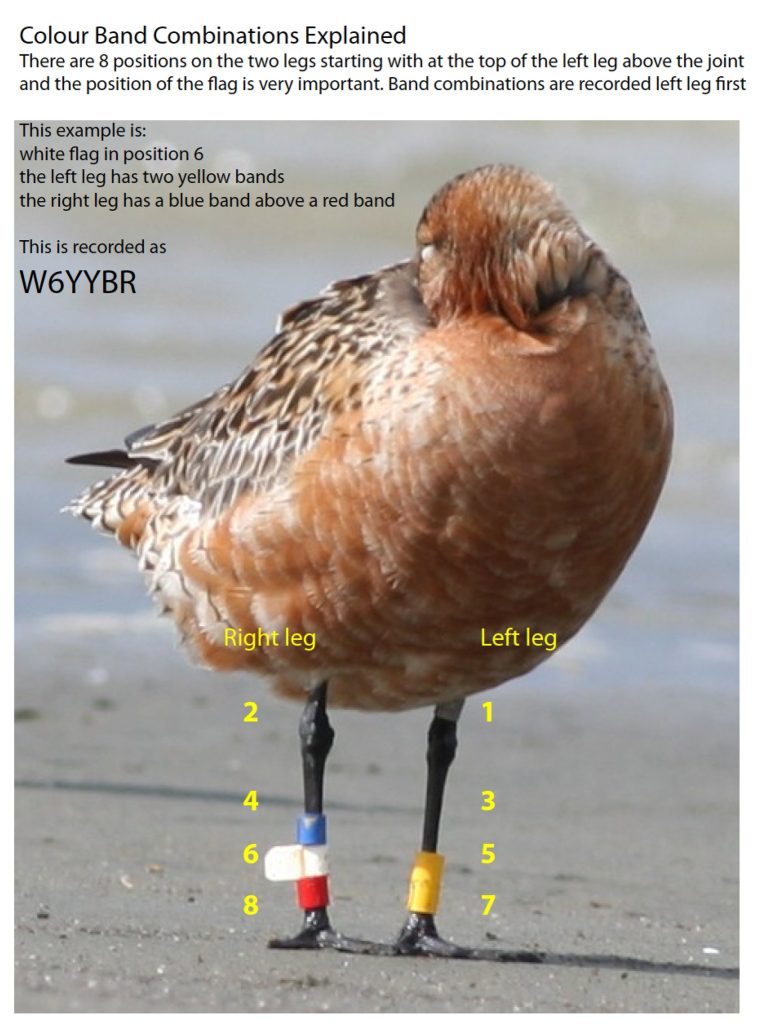
Each bird fitted with a satellite tag is also fitted with colour bands and a flag on its legs so that it can be identified in the field. We always use 4 colour bands and one white flag. There are 8 possible locations on the legs as can be seen in the attached image and so the number at the start means the position of the white flag and the letters indicate the colour bands. In the pictured example 6YYBR, Yellow above Yellow on the left leg and Blue over Red on the right leg. Writing it as 6YYRB just makes it easier for us and the computers.
In the picture example the name starts with W. We leave that off for these updates because all the flags on the birds in this New Zealand project will be white.
You can read more about Reading bands and flags in this article.
Do they rest on the sea?
Unlike waterfowl or seabirds, waders are not equipped to rest on the sea. They lack the webbed feet and more oily plumage of these water birds so do not stop to rest on the sea. They must be able to make the long flights between staging sites non-stop.
Do they stop to feed during a migration flight?
Godwits main feeding habitats are the arctic tundra and tidal mudflats. And yes, there may be some mudflats in the small islands and coastal areas along their migration path, but there won’t be enough food in these areas to support the hundreds of thousands of migratory waders that are a part of this East Asian-Australasian Flyway. They will stop if they are forced too, due to weather perhaps, but this is the exception and will generally travel non-stop between their staging sites.
How high do they fly?
We really don’t know yet but somewhere between sea level and 6,000m should cover it. We have very little information on this and it is very difficult to study birds flying over a vast ocean. The sea level is based on a photo taken of 13 godwits flying north one March, 800km north of Norfolk Island in the mid Tasman and the 6,000m is based on an altitude study of the Black-tailed Godwits flying from Europe to West Africa.
We suspect they fly at a range of altitudes throughout their flight depending on wind direction and air temperature. We hope to fit some altitude trackers to our godwits in the next year or two if we can raise the funds. You can support this research by donating to the Tracking Project Fund here, just select the project from the dropdown list.
How fast do they fly?
They will fly somewhere between 50-75kmh depending on the winds they find along the way.
Do they fly in flocks or solo?
They generally fly in a flock of between 20 to 80 birds although there are records of much smaller (2 or 3) and much larger flocks (200+) too.
Do they migrate every year?
Most kuaka migrate each year but we will always have a small population that stay over winter, maybe 200-300 here at Pūkorokoro Miranda and about 5,000-12,000 throughout New Zealand.
There will be godwits that remain here because they’re too young, it makes most sense to only make this strenuous journey if you’re going to breed. Although these juveniles have taught us it’s not uncommon for them to migrate before they’ve reached a breeding age too. There are other adults that don’t migrate on a given year, perhaps they arrived back late from breeding and don’t have enough time to complete their wing moult and gain enough weight or they have an injury that would make it difficult to survive the migration that year.
What is the longest non-stop flight recorded?
With these transmitters continuing to send us data for over 2 years now, the record breakers keep coming. Last year the recordholder for longest non-stop flight changed twice in a matter of hours. The current record holder is 4BBRW who flew at least 13,050km non-stop from Alaska to Australia.
You can read more about this incredible journey and Adrian’s summary of the 2021 southern migration in Issue 122 of Pukorokoro Miranda News.
What is the fastest flight from Alaska to NZ?
E7 was the female godwit fitted with an implanted transmitter in 2007 who first confirmed that the kuaka make the flight here to New Zealand from Alaska non-stop. She completed this 11,680km flight in 8 days and 4 hours (average 6okmph). This is still the record today.
You can read the article by Bob Gill looking back over the last 15 years of godwit research since E7’s historic flight in Issue 123 of Pukorokoro Miranda News.
Do the young birds migrate to NZ in their first year?
Yes, the juveniles will need to leave before the northern winter sets in and the food sources disappear. When these juveniles arrive in New Zealand they are only about 12 weeks old!
Do the young birds come with their parents on their first flight?
All chicks will leave their nest within 24 hours of hatching. Female godwits leave the nest and head out to the staging areas once the chicks have hatched. The males will stay longer, to brood and provide some defence, but they will also leave to head to the staging areas once the chicks have fledged. It is possible that the juveniles follow the adults to the coastal areas of Alaska, but there is a strong tendency toward age-specific groups once there. The adults have had more time to put on weight than the juveniles that are trying to catch up, so more likely to migrate first. So while evidence suggest some adults and juveniles do migrate together, there is also a strong chance that juveniles can travel without adults. It certainly happens in other shorebird species.
Do they sleep while they are migrating?
While they are flying they will shut down half of their brain at a time in a form of sleep
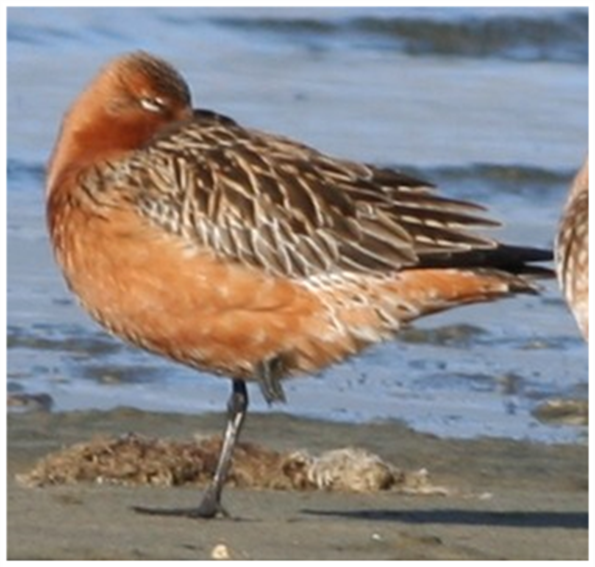
Why are some birds in the flock a reddish colour?
The adult males are the ones who develop this deep red, rusty coloured breeding plumage. The darker more impressive plumage may be the indication to the females of a good choice in a mate. These darker males also breed further north than the paler birds.
Are they site faithful in Alaska and NZ?
Yes, kuaka are very site faithful in New Zealand although less so in Alaska. They will still return to the same general breeding areas, males more likely so than females. In their southern migration, if a godwit encounters difficult weather, they may detour to Australia or one of the islands in the Pacific but they will still return to their site in New Zealand once they’ve refuelled.
Do they mate for life?
Studying breeding behaviour across the thousands of square kilometers of Arctic tundra has it’s challenges so there aren’t any studies into this. But pairs have been observed mating in successive seasons. However if a mate did not return, they are likely to find a new partner.
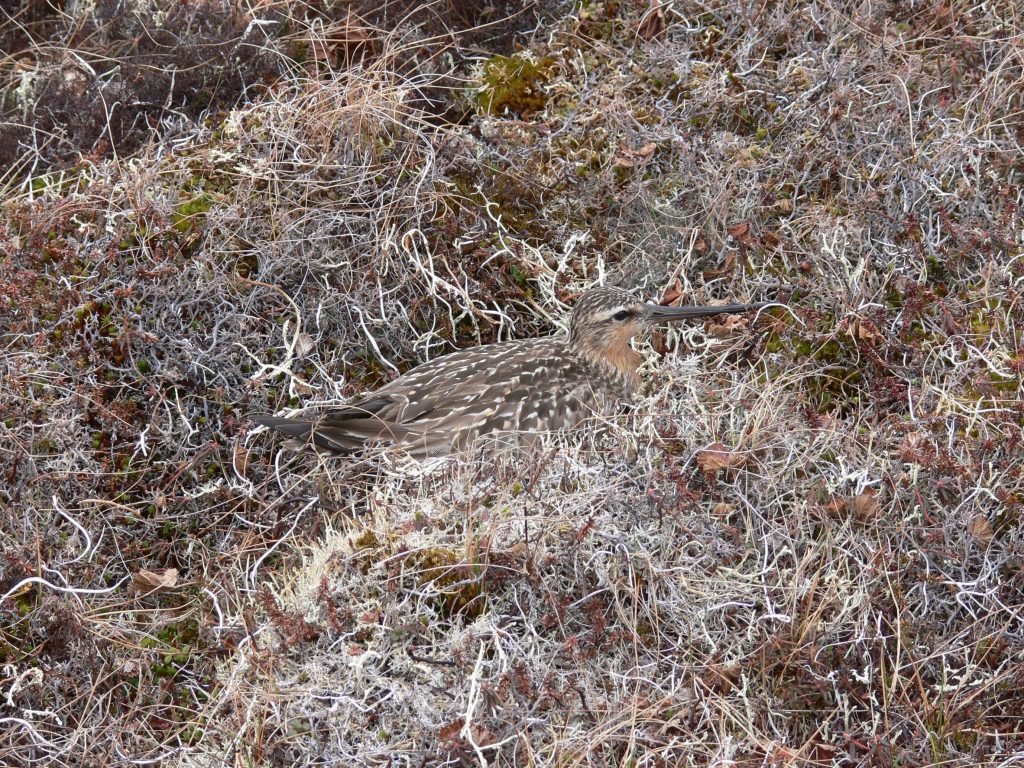
Do they ever breed in NZ?
No, they only breed in the Arctic tundra. Godwits have evolved to make use of this specialised niche and abundant food supply during the northern summer.
The chicks are precocial, they hatch and within hours are feeding themselves. They have such a short time to grow to the size of an adult, grow all their flight feathers and put on all the extra weight they will need for their migration. They need to be in the middle of the food supply.
A tidal mudflat, like those areas they use in New Zealand, wouldn’t suit godwits as a breeding area. Much of the feeding ground couldn’t be accessed by a flightless chick, there could be a high chance of predation and it would lack the freshwater they need until their salt glands develop.
How long do they live?
We have regular sightings of bar-tailed godwits in New Zealand that are over 20 years old although it’s generally suggested that they live between 10-15 years. The oldest recorded kuaka was first banded in New Zealand in 18 Dec 1993 as a second year bird. She wasn’t noticed again until 11 February 2008 when she was recaptured and fitted with an engraved flag ASE. She hasn’t been seen in New Zealand since 2015 but was seen and photographed near Brisbane in November 2020, making her 28 years 3 months old.



